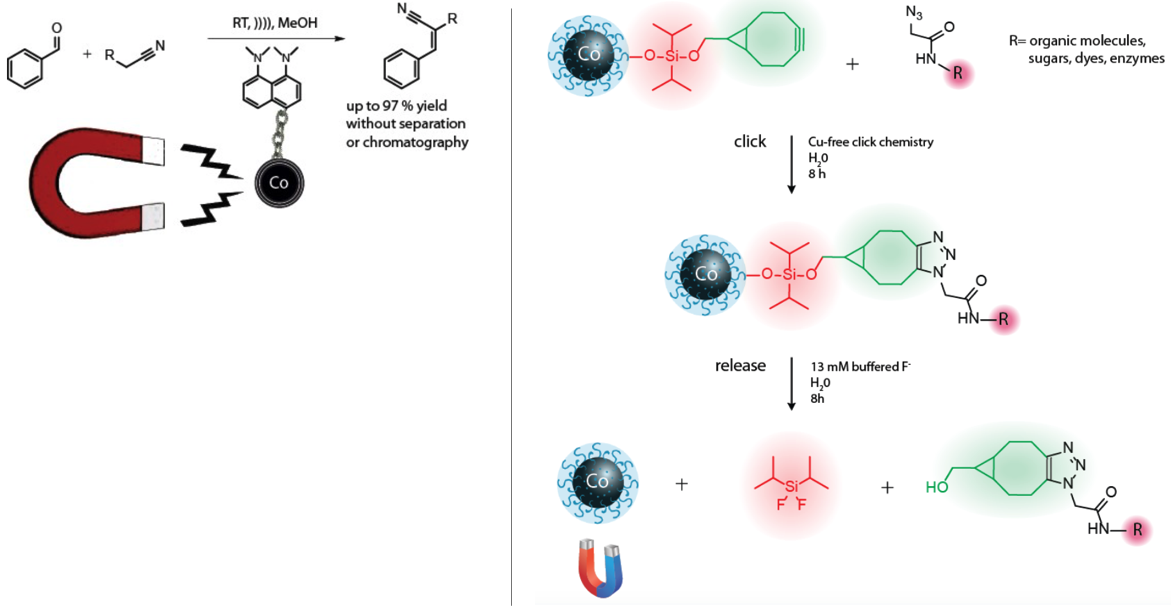Using carbon-coated metal nanoparticles as support for magnetic reagents
Carbon-coated cobalt nanoparticles are an ideal support for magnetic reagents for a wide range for applications.1 In this talk, severall applications of these kind of reagents are presented, starting with immobilized organosuperbases, such as the classic proton sponge (1,8)-bis(dimethylamino)naphthalene (DMAN).2 Using this heterogeneous system, catalysis of the Knoevenagel condensation can proceed smoothly and tedious work up procedures, such as column chromatography, can be avoided.

Furthermore, a magnetic ”click and release” reagent has been synthesized, consisting of a cupper-free click reagent (strained alkyne) and a fluoride cleaveable linker.3 This reagent can be used in biological media and is suitable to remove tagged enzymes from a environment and release them unharmed in another. Applications of this system are for example analysis of native protein complexes.
Additionally, futher mangetic reagents developed in our group are presented, such as magnetic EDTA and magnetic reducing agents (TCEP).
[1] Schätz, A.; Reiser, O.; Stark, W. J. Chem.-Eur. J. 2010, 16, 8950.
[2] Schneider, E. M.; Raso, R. A.; Hofer, C. J.; Zeltner, M.; Stettler, R. D.; Hess, S. C.; Grass, R. N.; Stark, W. J. The Journal of Organic Chemistry 2014, 79, 10908.
[3] Schneider, E. M.; Zeltner, M.; Zlateski, V.; Grass, R. N.; Stark, W. J. Chem. Commun. 2016, 52, 938.